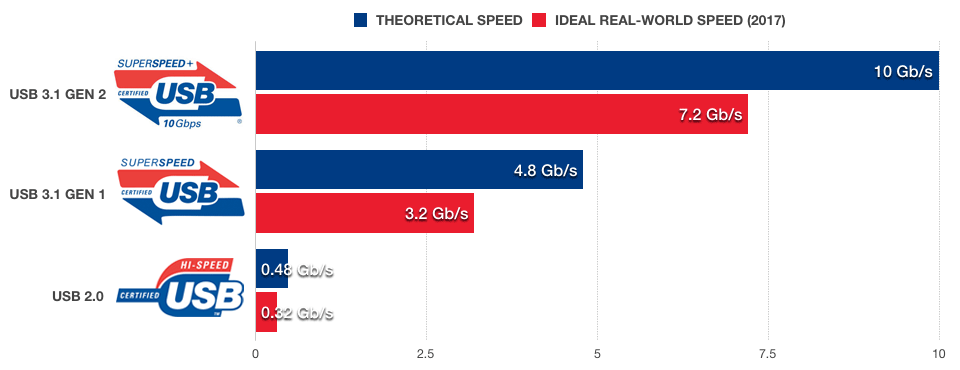 USB or the Universal Serial Bus, standards have evolved since it was first launched in 1996. Industry giants like Compaq, Intel, and Microsoft form part of the consortium that backs the USB standards worldwide.
USB or the Universal Serial Bus, standards have evolved since it was first launched in 1996. Industry giants like Compaq, Intel, and Microsoft form part of the consortium that backs the USB standards worldwide.
There are many reasons because of which the developers are continuously looking for ways to improve the data transfer speed of the USB port. With increasing competition from other modes of data transfer such as Bluetooth and NFC, USB method is still one of the most popular. The convenience or the ease of use that a user of USB feels is not available in any other mode. Additionally, the USB method of data transfer is still one of the safest ways as it uses a physical pathway between the two devices however with data file sizes increasing to the capacity of GBs, it has become essential to increase the speed of the port.
Many different forms of USB ports are now coming into existence which also includes the currently popular type C connection. Some people believe that USB type C and USB type 3.0 are the same but different names of the modern day USB connections however they are entirely different. The USB type C is a different thinner form of the USB connection which is mostly available in the laptops and Smartphones of today however it is the USB type 3.0 that is the higher version of the previous version of 2.0 which depicts the speed improvement of the USB port from what it was earlier.
Growth of the USB
Over the years the USB standards have improved from a 1.1 version to the USB 2.0 hi-speed connectivity. The significant turnaround in the rules came with the USB 3.0-speed version that provided super fast speed and much-enhanced connectivity. The Data transfer speed is 10x time the 2.0 version while it offers improved maintaining capabilities and compatibility.
In this article, we will discuss what the USB 3.0 has to offer in depth.
Before that, I must tell you that the USB 3.0 breakers the 2.0 standard of 480 Mb/s by offering all new and improved 4.8 Gb/s. Now, this doesn’t mean that your new USB 3.0 will be flash; this new standard is theoretically proven, but still, it reaches up to 3.2Gb/s. Now this means that you will be able to move a 27GB HD movie in about a minute rather than 15-20 minutes that were taken by USB 2.0.

So, coming back to facts you should know about the all-new USB 3.0
- USB 3.0 is bi-directional: Yes, you hear it right. All USB 3.0 is bi-directional, that means you can read or/and write data simultaneously, which was not possible earlier. All this is achievable by adding two new lanes. One lane is used for transmitting Data at super fast speed and the other one for receiving it. It means unlike USB 2.0 that had four connections the 3.0 will have nine ports altogether, including the power and ground contact. In the USB 3.0, signaling method will be host driven. That means the device will send a signal to its host to begin the data transfer.
- Power efficient:The fact that USB 3.0 look for only actively connected media for data transfer, ensures that passive devices don’t have to face the problems of power drainage which also enables the devices to charge faster when being turned to charging mode.
- Backwards compatibility: One of the most promising aspects of the 3.0 is that it is compatible with devices that are built for usb2.0. However, the data transfer will not be as good as what you will get from a USB 3.0 port.
With increasing popularity of USB 3.0, we can see a growth in the number of devices that are compatible. Most of the favourite smartphone brands have already started manufacturing phones that work with USB 3.0 also most of the motherboards are coming with this compatibility. Developers are always looking for ways to further improve the data transfer process and speed of the USB Data transfer method, and hence users are recommended to keep a track and stay updated to the technological advancements to make the best out of their devices.







